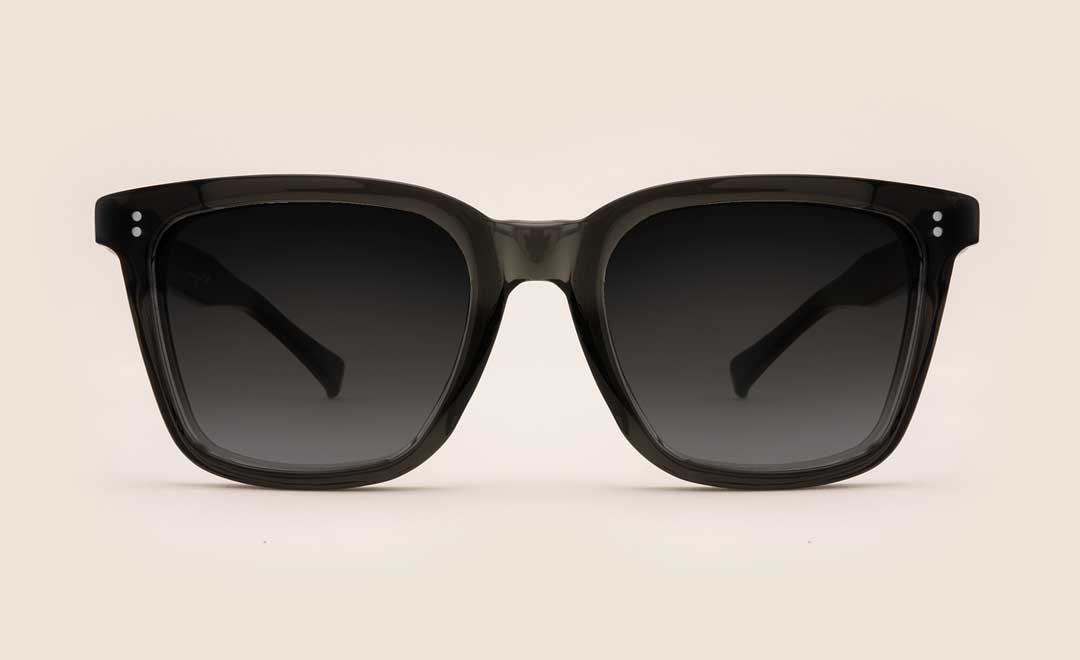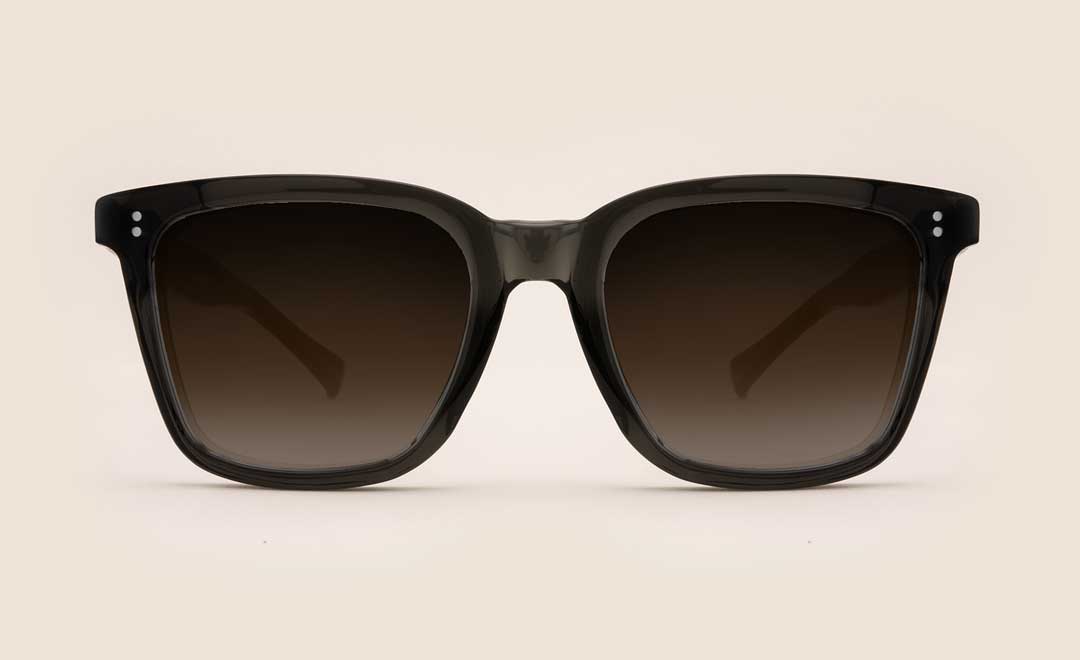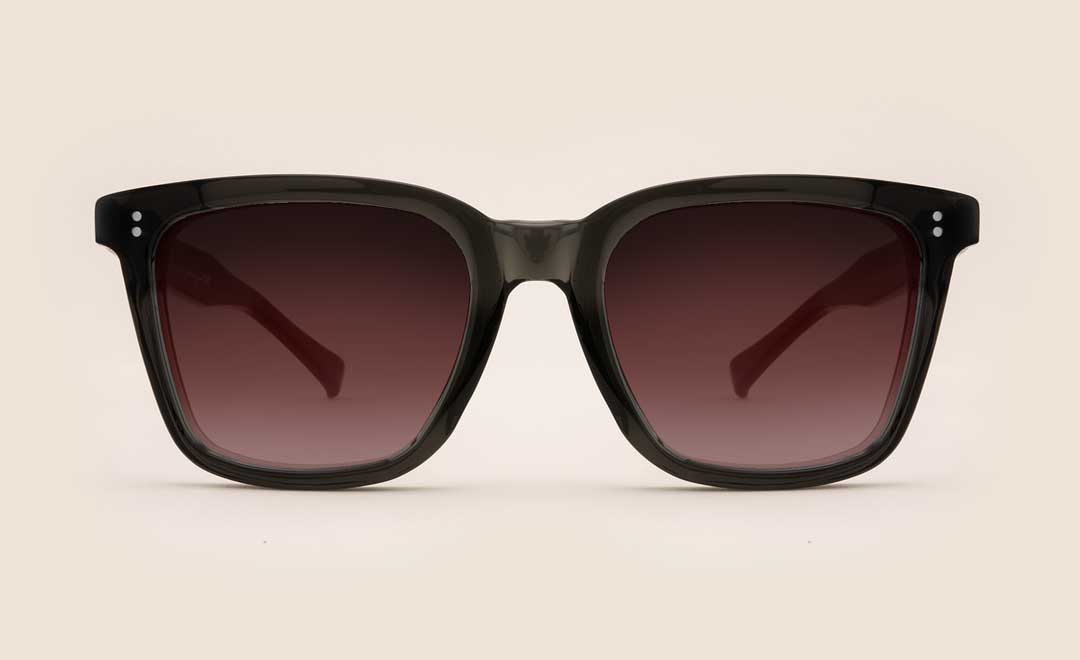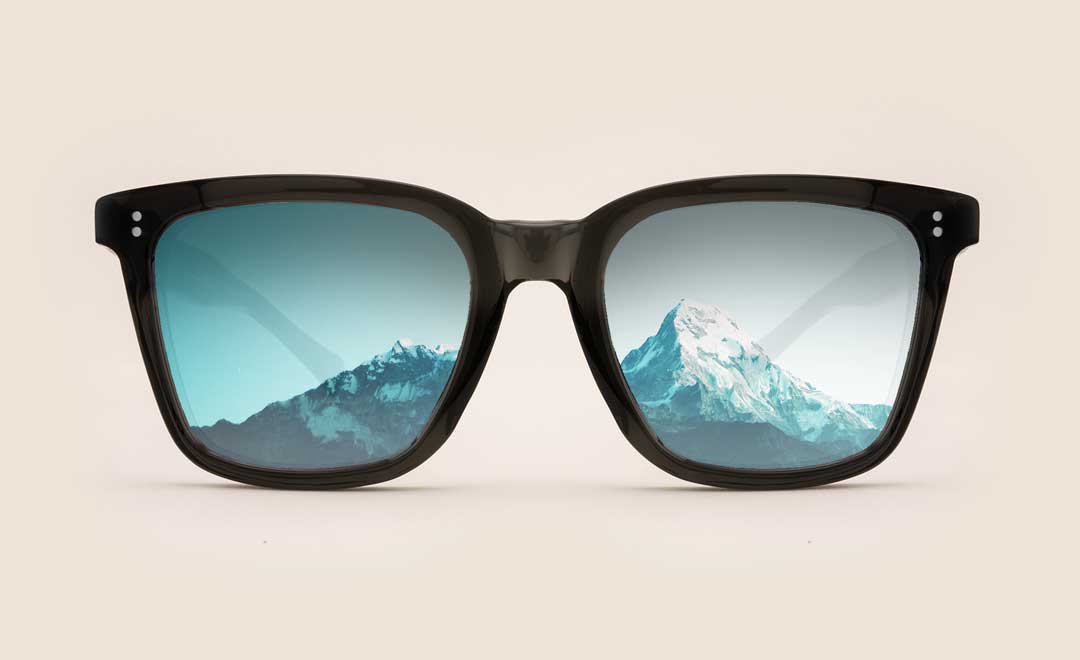If your sun lenses are 100% UV protective, you’ve already covered the most important aspect of sunglasses.
They’ll stop your eyes getting sunburnt.
But how does lens colour affect their performance? And should you use a particular colour for your lifestyle, weather conditions or just for fashion?
To explain, this lens colour guide should clear things up.
What colour lenses are best for sunglasses?
Varying colours of sun lens tints filter light in varying ways. For general use, grey green or brown tinted lenses are popular for true colour perception, whilst blue or yellow tints are better suited to specific purposes and/or light conditions.
Does the colour of your sunglasses matter?
Yes, the colour of lenses fitted to your sunglasses can dramatically effect your visual experience. From colour and contrast perception to their ability to diminish glare, the colour of your lenses can be a crucial consideration, especially if you use your sunglasses for sport or demanding visual tasks such as driving.
How do I choose the right sunglasses lens colour?
The colour of your sunglasses lenses depends on how, where and why you wear them. For casual or fashion use, regular non-polarised lenses in grey, green or brown tint colours usually work fine in varying conditions for most people most of the time.
However, for demanding sporting applications, you may benefit from particular lens colours in varying darkness's, not to mention polarisation or even mirror coatings.
To help, check out the following sunglasses lens colour guide below.

Grey sunglasses lenses
The most common sunglasses lens colour, grey sunglasses lenses are great for all-round use in various light conditions from high exposure to cloudy days. Due to their neutrality, they provide true colour perception which is helpful for tasks like driving, hiking or if you're near water.
Aesthetically, grey lenses won’t clash with colourful acetates or your attire. They harmonise easily with any colour sunglasses frame.
The primary advantage of grey sun lenses are their anti-fatigue property; the grey tint minimizes eye strain and squinting, substantially easing eye tension. It serves as an ideal choice for sunny days or when experiencing variable weather conditions.

Green sunglasses lenses
A highly adaptable tint option, green sunglasses lenses are great at reducing glare and improving visual contrast in high exposure, right through to low light conditions. Like grey lenses, they’re useful for reducing eyestrain on particularly bright days.
Aesthetically, green sun lenses are very traditional, harmonising with many frame styles and colours; especially black, crystal or tortoise shell pattern.
Green lenses are ideal for sports applications as they enhance visibility by brightening shadows. This makes them particularly popular among tennis players and golfers who benefit from the improved contrast. However, their versatility also makes them an excellent choice for non-sporting scenarios.

Brown sunglasses lenses
Best suited for bright sunlight, brown coloured sunglasses lenses help to reduce glare, regardless of polarisation. Great for general use or if you're very light sensitive, brown lenses have very mild colour distortion and help to improve contrast.
Aesthetically, brown lenses are a classic choice and work well with many colours of acetates; especially brown, green or tortoise shell pattern.

Yellow sunglasses lenses
Yellow tinted lenses are suited towards low light conditions on cloudy days, during haze or fog. They’re especially popular for sporting applications as they provide excellent depth perception which makes them popular for sports such as hunting or mountain biking.
Yellow lenses do cause quite severe colour distortion but they provide much sharper vision in poor/flat light.
Aesthetically, yellow lenses can be worn as a fashion-tint to add depth, character and a bit of a vintage sort of vibe. However, this lens colour is mostly worn for sport.

Blue sunglasses lenses
Blue sun lenses provide fantastic visual contrast in low light conditions, enhancing colour perception and depth. For alpine sports such as skiing, blue lenses are especially useful in foggy conditions otherwise known as 'flat light'. They help you detect undulations in the terrain around you, but aren’t particularly good for high exposure sunlight.
Aesthetically, blue tinted lenses are highly fashionable and are regularly worn by many famous celebrities including Johnny Depp, Elton John and Jonah Hill.

Red sunglasses lenses
Red tinted sun lenses are commonly used in sports for increasing depth of field, making it easier to see deviations and differing terrain textures. This makes them especially popular for driving and cycling which demands forward planning and quick reactions to oncoming road undulations.
Furthermore, red coloured lenses are also helpful for reducing computer related eye-strain. If you use a computer all day, these lenses can minimise the effects of high energy visible (HEV) blue light which emits from digital screens.
Aesthetically, red and rose coloured lenses are mostly recognised as a sporting lens but can be worn for fashion purposes.

Mirrored sunglasses lenses
Mirror tinted sun lenses are primarily grey, brown or green with an additional metallic coating which is applied to lens before the tint colour is applied. This gives its externally mirrored colouration, whilst the tint colour is what you experience internally looking through the lens.
The metallic coating reflects sunlight away from the lens reducing visible light between 10 and 60% whilst reducing glare. These lenses are not polarised.
Aesthetically, mirror tinted lenses are incredibly vibrant and can be often quite garish. However, they can be a fashionable look as they completely hide your eyes from behind the lenses.
Sunglass lens colour guide
| Conditions | Grey | Green | Brown | Yellow | Blue | Red | Mirror |
 |
 |
 |
 |
 |
 |
||
 |
 |
 |
 |
 |
 |
||
 |
 |
 |
 |
 |
|||
 |
 |
 |
 |
 |
|||
 |
 |
 |
 |
Are darker sunglasses better?
The darkness of sunglasses doesn't make them better or worse. Their darkness is simply for visual comfort and has no relation to UV protection. Darker lenses absorb more light, but must always provide 99-100% UV protection. Because UV light is invisible, tint darkness is purely a visual preference, secondary to UV protection.
Always ensure that sunglasses are rated UV40 or UV400. These titles both mean the same thing; that the lenses are 99-100% UV protective.
What is the normal tint for sunglasses?
Recreational sunglasses lenses are usually tinted between 60 to 85% darkness. This classes them as category 2 or category 3 lens in relation to the amount of visible light they absorb. There are 5 categories of sun lenses ranging from very lightly coloured lenses (0% tint) to very dark coloured lenses (>85% tint).

The 5 categories of sun lenses ranging from 0% to 85%, tint. The darkness of a lens is measured by the amount of visible light which can pass through, optically known as VLT (visible light transmission.) This percentage is what classes a lens into each of the 5 categorises.
Are mirrored sunglasses better?
Mirrored sunglasses can be a better option than regular sunglasses. Mirrored lenses use multiple anti-glare lens coatings and a very thin metallic film in their construction which reflects excess light away from your eyes to reduce eye strain. Whilst mirrored lenses don't block glare like polarised lenses do, they help reduce it - more than regular tinted sun lenses.

What lens colour is best for bright days?
For bright days, sunglasses with grey or green tinted lenses provide the best results. These colours reduce glare whilst providing the purest perception of colour. To reduce visual fatigue on especially bright days, polarised lenses block condensed sunlight reflected from flat shiny surfaces such as water, snow or ice.
What is the best colour for polarised sunglasses?
The most common colour of polarised sun lenses is grey, brown or green as they perform well in the majority of light conditions. Grey tints are usually favoured due to their neutrality as they don’t affect colour perception. Other tint colours are available, however colour distortion and extreme changes in light conditions may impede their performance.
What’s the best sunglasses lens colour for driving?
Sunglasses with grey, brown or green tinted lenses have the least affect on your colour perception. For driving, any of these lens colours are suitable for detecting traffic and brake lights whilst protecting your eyes from UV light and reducing visual fatigue as you focus on the road.
To reduce eye strain on bright days, polarised sunglasses are wise option to diminish reflected glare from other cars, the road surface or nearby water, ice or snow.

Conclusion
- For specific light conditions or sporting applications, yellow, blue or red tinted lenses can enhance visual acuity and contrast.
- The most adaptable sunglasses tint colours are generally grey, brown or green.
- For recreational everyday use, you can use grey, brown or green lenses for just about any sort of task. Their tint darkness won’t improve UV protection, but can be tailored for your visual comfort depending on your sensitivity to visible light.
- Mirrored lenses reflect light away from your eyes more effectively than regular sun lenses, but do not filter light the same as polarised lenses do.
Hopefully you found this article helpful. Please check out our other sunglasses blogs for more useful advice.
Thanks for stopping by.